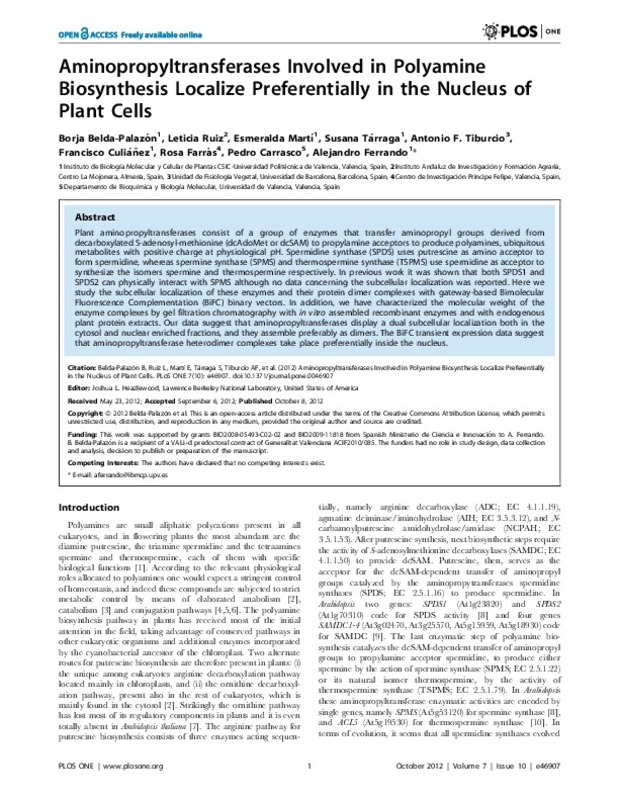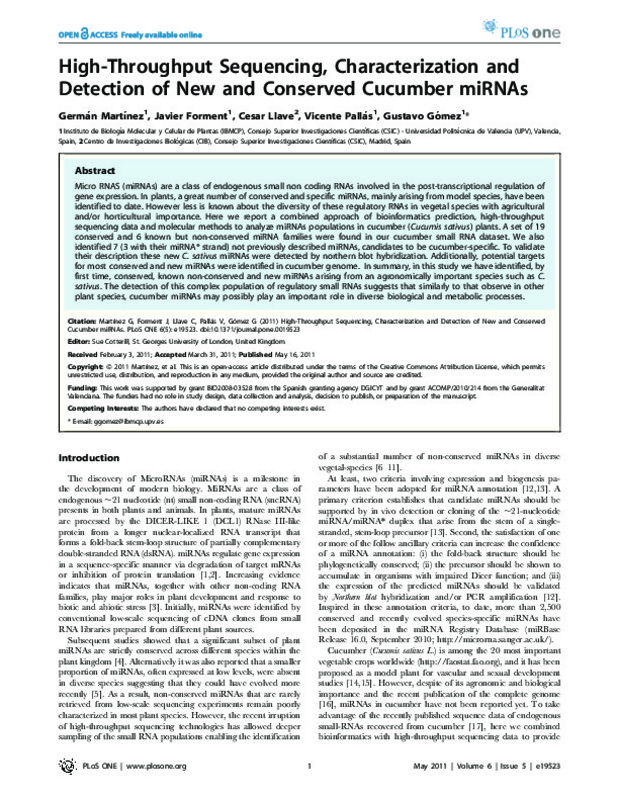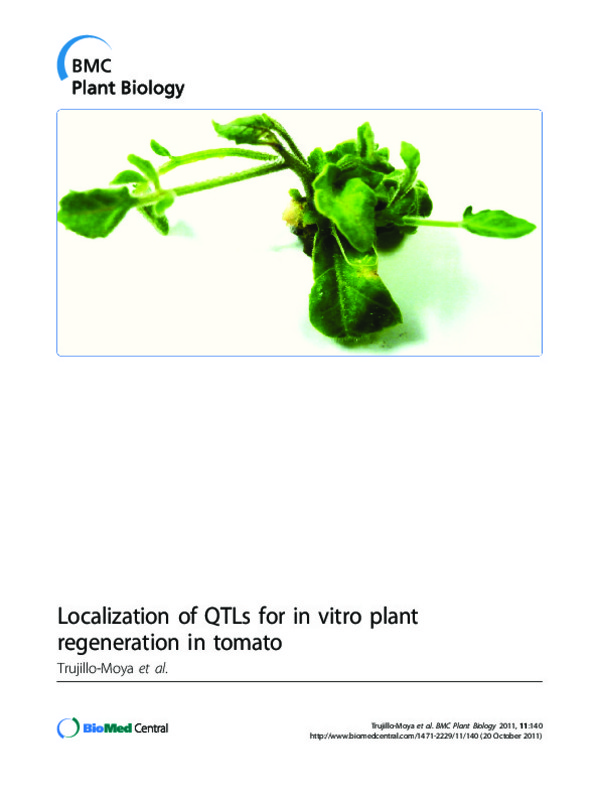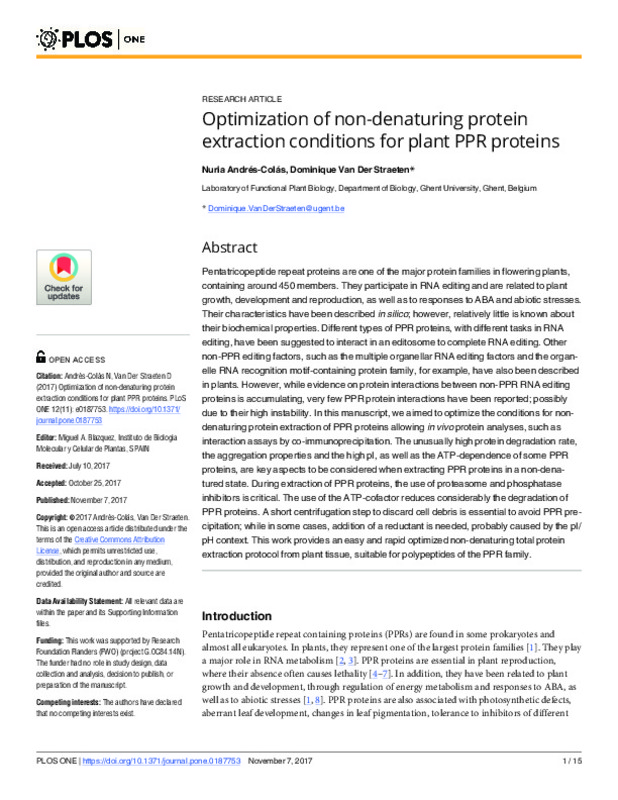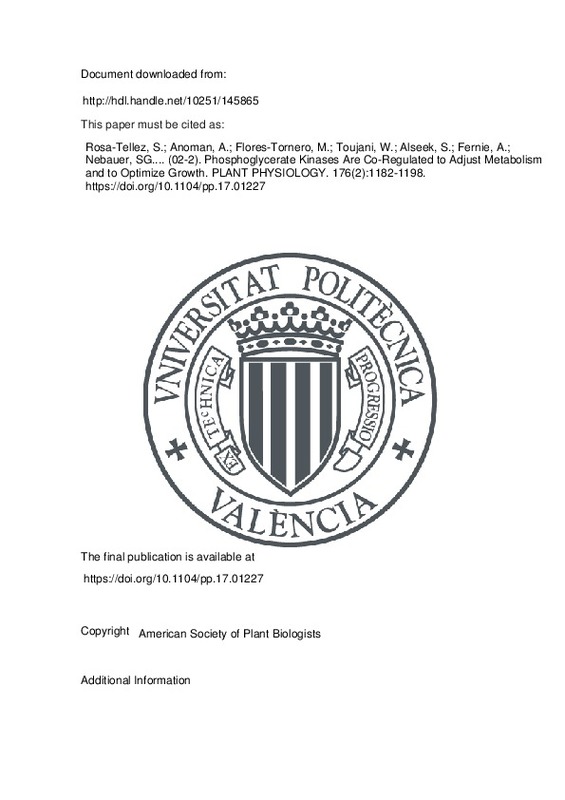

Listar por palabra clave "Arabidopsis-Thaliana"
RiuNet: Repositorio Institucional de la Universidad Politécnica de Valencia
- RiuNet repositorio UPV
- :
- Listar por palabra clave
JavaScript is disabled for your browser. Some features of this site may not work without it.
Buscar en RiuNet
Listar
Mi cuenta
Ayuda RiuNet
Admin. UPV
Listar por palabra clave "Arabidopsis-Thaliana"
Mostrando ítems 1-7 de 7
-
Belda Palazón, Borja; RUIZ, L.; Martí Sanchis, Esmeralda; Tarraga Herrero, Susana; Tiburcio, A.; Culiañez Macia, Francisco Antonio; Farras, R.; Carrasco, P.; Ferrando Monleón, Alejandro Ramón (Public Library of Science, 2012-10)Plant aminopropyltransferases consist of a group of enzymes that transfer aminopropyl groups derived from decarboxylated S-adenosyl-methionine (dcAdoMet or dcSAM) to propylamine acceptors to produce polyamines, ubiquitous ...
-
Sarrion-Perdigones, Alejandro; Vázquez Vilar, Marta; Palací Bataller, Jorge; Castelijns, Bas; Forment Millet, José Javier; Ziarsolo Areitioaurtena, Pello; Blanca Postigo, José Miguel; Granell Richart, Antonio; Orzáez Calatayud, Diego Vicente (American Society of Plant Biologists, 2013-07)[EN] Plant synthetic biology aims to apply engineering principles to plant genetic design. One strategic requirement of plant synthetic biology is the adoption of common standardized technologies that facilitate the ...
-
Martínez Navarro, Germán; Forment Millet, José Javier; Llave, Cesar; Pallás Benet, Vicente; Gomez, Gustavo Germán (Public Library of Science, 2011)[EN] Micro RNAS (miRNAs) are a class of endogenous small non coding RNAs involved in the post-transcriptional regulation of gene expression. In plants, a great number of conserved and specific miRNAs, mainly arising from ...
-
Trujillo Moya, Carlos; Gisbert Domenech, María Carmen; Vilanova Navarro, Santiago; Nuez Viñals, Fernando (BioMed Central, 2011)Background Low regeneration ability limits biotechnological breeding approaches. The influence of genotype in the regeneration response is high in both tomato and other important crops. Despite the various studies that ...
-
Andrés-Colás, Nuria; Van Der Straeten, Dominique (Public Library of Science, 2017-11-07)[EN] Pentatricopeptide repeat proteins are one of the major protein families in flowering plants, containing around 450 members. They participate in RNA editing and are related to plant growth, development and reproduction, ...
-
Rosa-Tellez, S.; Anoman, A.D.; Flores-Tornero, M.; Toujani, W.; Alseek, S.; Fernie, A.; Nebauer, Sergio G.; Muñoz Bertomeu, Jesús; Segura, Juan; Ros Palau, Roc (American Society of Plant Biologists, 2018-02)[EN] In plants, phosphoglycerate kinase (PGK) converts 1,3-bisphosphoglycerate into 3-phosphoglycerate in glycolysis but also participates in the reverse reaction in gluconeogenesis and the Calvin-Benson cycle. In the ...
-
Goslin, Kevin; Zheng, Beibei; Serrano-Mislata, Antonio; Rae, Liina; Ryan, Patrick T.; Kwasniewska, Kamila; Thomson, Bennett; O'Maoileidigh, Diarmuid S.; MADUEÑO ALBI, FRANCISCO; Wellmer, Frank; Graciet, Emmanuelle (American Society of Plant Biologists, 2017-06)[EN] The transcription factors LEAFY (LFY) and APETALA1 (AP1), together with the AP1 paralog CAULIFLOWER (CAL), control the onset of flower development in a partially redundant manner. This redundancy is thought to be ...
Mostrando ítems 1-7 de 7

Universitat Politècnica de València. Unidad de Documentación Científica de la Biblioteca (+34) 96 387 70 85 · RiuNet@bib.upv.es


